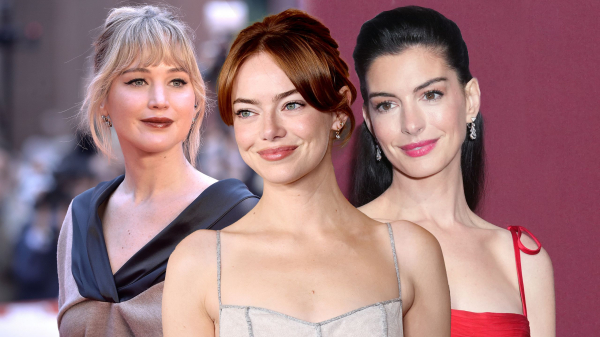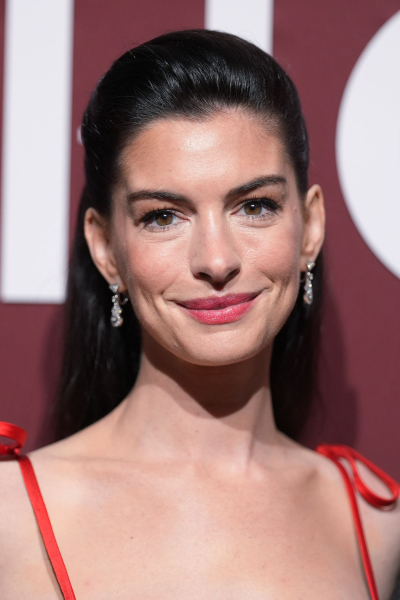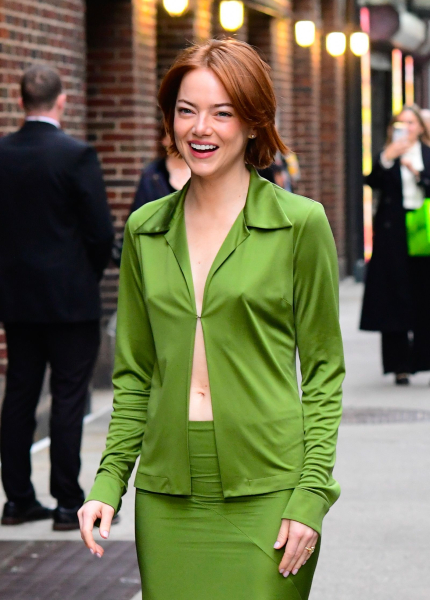 Collage: Briana Rengifo; Source Images: Getty ImagesSave this storySave this story
Collage: Briana Rengifo; Source Images: Getty ImagesSave this storySave this story
There are a million and one things happening on the internet right now that would make anyone want to throw their phone off a bridge. One of the things that’s been doing it for me lately is the “new face” discourse that’s dominated the online celebrity rumor mill for the better part of 2025. If a famous person shows up anywhere looking a little different than the last time they were seen, my social media feeds flood with videos and comments declaring they must’ve undergone several plastic surgeries because they’ve been suddenly rendered “unrecognizable.”
The celebrities this phrase is thrown at are usually women who, sure, might have changed a little over the years but still largely look like themselves. Claiming that they’ve undergone surgical “transformations,” as they’re often called, is in itself a big reach with no evidence behind it, for one. But the fact that we’re so quick to use a term as extreme as “new face” to describe anyone whose look seems to have changed for reasons we can’t know is a sign of something more concerning: that we’ve become willing to disconnect ourselves from reality to justify our continued shaming of women’s appearances. Let’s look at a few examples.
Anne Hathaway was declared to have a “new face” after sitting front row at a Ralph Lauren show in April and then again after her Met Gala appearance in May. Netizens, professional content creators, and even doctors raced to make claims of a brow lift, facelift, and/or blepharoplasty without accounting for the tight-as-a-drum ponytail she wore to both events. Jennifer Lawrence has also been a recent target of “new face” discourse. Even though she’s only 35, she’s been similarly accused of rendering herself unrecognizable with various age-reversing cosmetic procedures (all of which she’s denied having done, save for Botox). Then there’s the one I really don’t get: Emma Stone. People online called her appearance at the Eddington premiere in June her “new face reveal,” and the blepharoplasty/facelift rumors have been rampant ever since (like Lawrence, she’s only 35).
Jennifer Lawrence at a red carpet premiere in October.
Photo: Getty Images
I could spend the rest of this story talking circles around the exact changes people have perceived in these women’s faces, but it would ultimately be beside the point. Because no matter how you slice and dice the speculation, going so far as to say that any of them have a “new face” is a wild exaggeration.
Hathaway, when she lets down those snatched updos, still has smile lines and a wrinkle here and there, and her eyelids appear slightly hooded rather than pulled back—like those of a typical (albeit very beautiful) 42-year-old. Lawrence’s eyes are as deep-set as ever, and her face has kept its rounded shape with full cheeks. Stone has certainly changed her eyebrow shape and, obviously, cut her hair short, but when I see her in motion in recent interviews (like this one with the BBC), I don’t see the drastic cosmetic transformation everyone else apparently does. When she laughs, her rounded cheeks push up toward her eyes, and her eyelids disappear into their natural hoods. Her forehead scrunches and relaxes when she inevitably makes a funny face or two. It doesn’t feel all that different from watching Easy A.
Are we not willing to accept that people’s faces are bound to change a little as they get older? Warranted, there are celebrities out there who do undergo drastic plastic surgery transformations that can be worth talking about in the right context. Kris Jenner did get what I think is fair to call a “new face;” hell, I mistook her for Kim Kardashian the first time I saw her post-facelift earlier this year. But making that leap for anyone whose face seems to have changed in tiny ways over a long period of time? It doesn’t account for the happenings of real life, like getting older. Or getting pregnant (Lawrence had a baby earlier this year, by the way). Or weight fluctuation, or medical conditions. It doesn’t even account for the simplest of factors, like using different makeup and hairstyling techniques. (Mara Roszak, hairstylist to actresses like Zoe Saldana, Stone, and Olivia Wilde, told Allure recently that for a “snatched” effect, she sometimes makes tiny hidden braids behind a client’s ears, pulls them up and back, and secures them behind the head.) Most of this “new face” discourse is simply not tethered to reality.
Hathaway at the Met Gala in May.
Photo: Getty Images
Hathaway at a WWD event in October.
Photo: Getty Images
It’s also a thinly veiled weapon of misogyny. Some women are praised for their so-called transformations, while others are shamed for doing too much for their faces. “I’ll have what she’s having” was a common sentiment when Hathaway went viral, but recent images of Stone posted by Roszak have drawn comments like “lol she doesn’t look like her anymore,” and “BRING BACK her unique face.” Either way, these women are held to narrow—and contradictory—parameters of what they ought to look like and what’s acceptable to do to your own face. It scares me to think that, if I were in their position at my current age of 31, I could just as easily be put on blast for having changed entirely simply because I tried something new with my look, went through something difficult that altered my appearance, or simply aged just enough for someone to notice (all of which I have done recently).
It all speaks to a deep fear of the changes that come with getting older, including aging. All three of the women I’ve discussed in this story have been in the public eye for at least a decade, and they all became household names by the time they hit their early 20s. It would be delusional to think that none of their faces would change through their Hollywood tenure, and yet the internet acts as if their respective, gradual aesthetic evolutions are shocking. Regardless of whether plastic surgery played a role in those evolutions, the change itself and the passage of time are what I think make people uncomfortable. These generational icons are not the same bright-eyed 20-somethings they were at the start of their careers, and it’s far easier to judge them for changing than it is for us to reckon with our fear that our faces are going to change eventually, too. So it doesn’t take a psych degree to understand that a lot of this commentary is pure projection.
Emma Stone en route to an appearance in October.
Photo: Getty Images
There’s definitely value in being aware of plastic surgery and how celebrities can use it to align with (and, in turn, reinforce) beauty standards—but the language we use when talking about that is important. Anyone who’s made content on social media, whether personally or professionally, knows the power of a catchy hook. Be honest, what’s more likely to get your attention? “Jennifer Lawrence has an entirely new face, and here’s how she got it.” Or: “Jennifer Lawrence’s face looks a little bit different but not that much, and it’s probably just because it’s evolving gradually with the passage of time.” Even I, with all my lecturing, would probably stick around to watch the former.
On social media, it feels normal for us to use and hear language designed to elicit a strong feeling that makes people want to stop, watch, judge, and react. It’s how we’ve been conditioned to operate on the internet since short-form video became a thing and impeded our ability to pay attention to anything for more than a few seconds at a time. But if we’re not stopping to think critically about what we’re hearing and seeing on the little dopamine machines we call phones, that junk winds up impacting our beliefs and perceptions in real life, too (I mean, just look at incel culture if you think I’m wrong).
And that makes us all a bunch of assholes. Because labeling such small changes a “new face”—especially on social media—rarely serves to challenge beauty standards the way people seem to think it does. It’s purely for our entertainment, with a “gotcha” kicker. And women, as usual, are the ones on full display while the rest of us get to watch the show… at least for a few moments before we scroll on to the next thing.





Leave a Reply